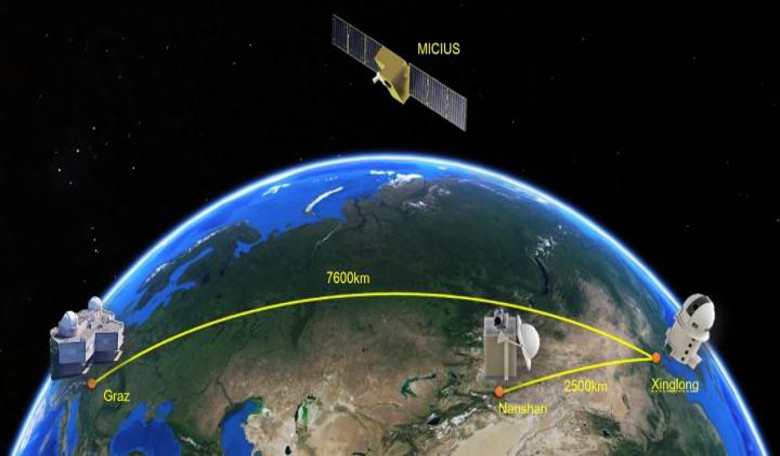A joint China-Austria team has performed quantum key distribution between the quantum-science satellite Micius and multiple ground stations located in Graz (near Vienna), Xinglong (near Beijing) and Nanshan (near Urumqi).
With the exponential growth of the internet and applications such as e-commerce, it has become extremely important to ensure that data, wherever it is sent in the world is protected to the highest degree possible. Normally, this is usually done via public key cryptography – an encryption scheme that uses two mathematically related, but not identical, keys; a public key and a private key.
Although it is computationally infeasible to compute the private key based on the public key, the data that is encrypted only remains secure for as long as the private key is kept private.
Another technology that could one day make data encryption that is "hack-proof" is quantum key distribution (QKD). QKD uses individual light quanta (single photons) and relies on one of the fundamental aspects of quantum mechanics to make the encryption safe. Put very basically, when a third party tries to eavesdrop on the key they must in some way measure it, however, when you measure a quantum system, it disturbs that system and introduces detectable anomalies. As such, it becomes obvious that someone has tried to measure the key being transmitted.
Quantum computing is largely seen as the next big thing in communications, however its use in encryption has been limited to a few hundred kilometres, as the photon can be lost or degraded as it travels through optical fibre channels or terrestrial free space.
One way to overcome this is to use satellites, which can conveniently connect two remote points on the Earth. Because most of the photons' propagation path is in empty space it keeps attenuation of the photons to a minimum despite the distances involved.
Last year, China successfully launched the world's first quantum-enabled satellite called Micius. Named after the ancient Chinese philosopher and scientist, and orbiting at an altitude of ~500 km, Micius has recently been used as a trusted relay point to transmit a secret key created between China and Europe at locations separated up to 7600 km on Earth. These keys are then used for intercontinental quantum-secured real-world communication.
The research has been made possible by a cross-disciplinary multi-institutional team of scientists from the Chinese Academy of Sciences, led by Professor Jian-Wei Pan, who has spent more than ten years developing the sophisticated satellite. Within a year of its launch, three key milestones have been achieved, including ground-to-satellite quantum teleportation and satellite-based entanglement distribution to two locations on the Earth separated by ~1200 km.
Entanglement is the process whereby the quantum states of two (or more) separate objects can become linked together in such a way that they must be described by a combined quantum state, not as individual objects.
Along with the five ground stations that have been built in China to work with the Micius satellite, the country has also very recently built the largest fibre-based quantum communication backbone (also by Professor Pan's team), linking Beijing to Shanghai.
With the ongoing success of Micius, these three experiments could be the first steps towards a global space-based quantum internet.











